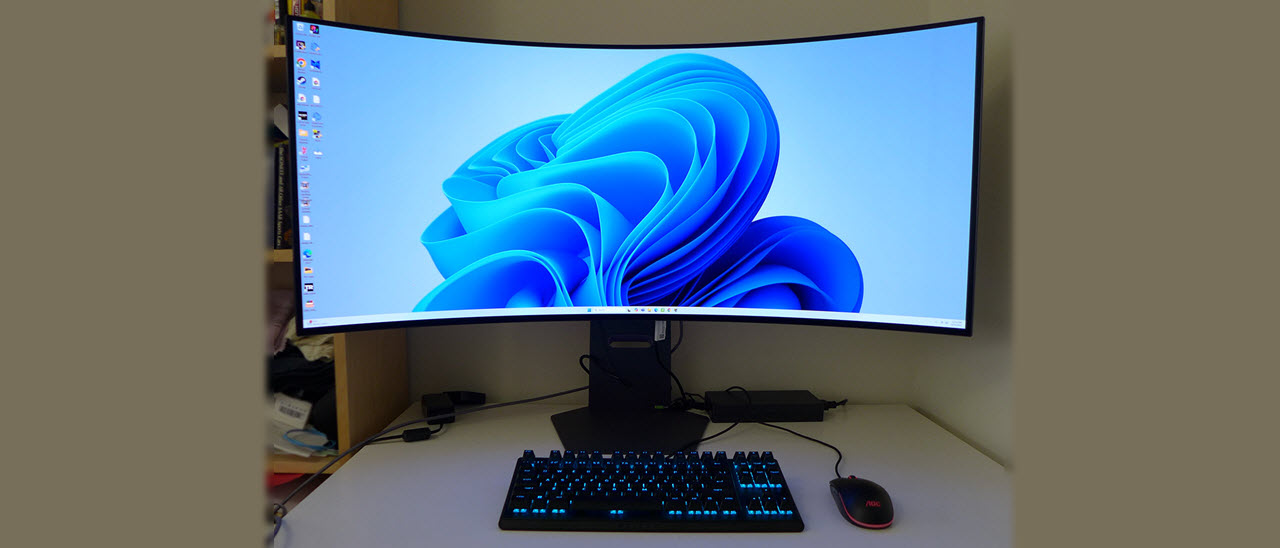Why you can trust Tom's Hardware
The 45GX950A comes set to its Gamer 1 picture mode, which is factory-calibrated to a 6500K white point, BT.1886 gamma, and DCI-P3 color. I noted that the adjustment produced some effects that did not improve picture quality.
Grayscale and Gamma Tracking
Our grayscale and gamma tests use Calman calibration software from Portrait Displays. We describe our grayscale and gamma tests in detail here.


In the default chart, only 100% brightness shows a barely visible red error. You won’t see this in actual content. Gamma rides the BT.1886 reference line with slight variations, but nothing to cause complaint. When I adjusted the RGB sliders, gamma became very skewed, resulting in reduced image quality. Shadow and highlight detail lost focus and became clipped making the whole picture flat and drab. Clearly, there is some interaction between the RGB sliders and gamma, which I could not work around. No biggie since the picture was fine to start with.
The sRGB mode has fair grayscale tracking with a slightly warm tone. Gamma is skewed to be too dark at the low end and too bright up top. This reduces both highlight and shadow detail. There is no way to correct this in the OSD.
Comparisons


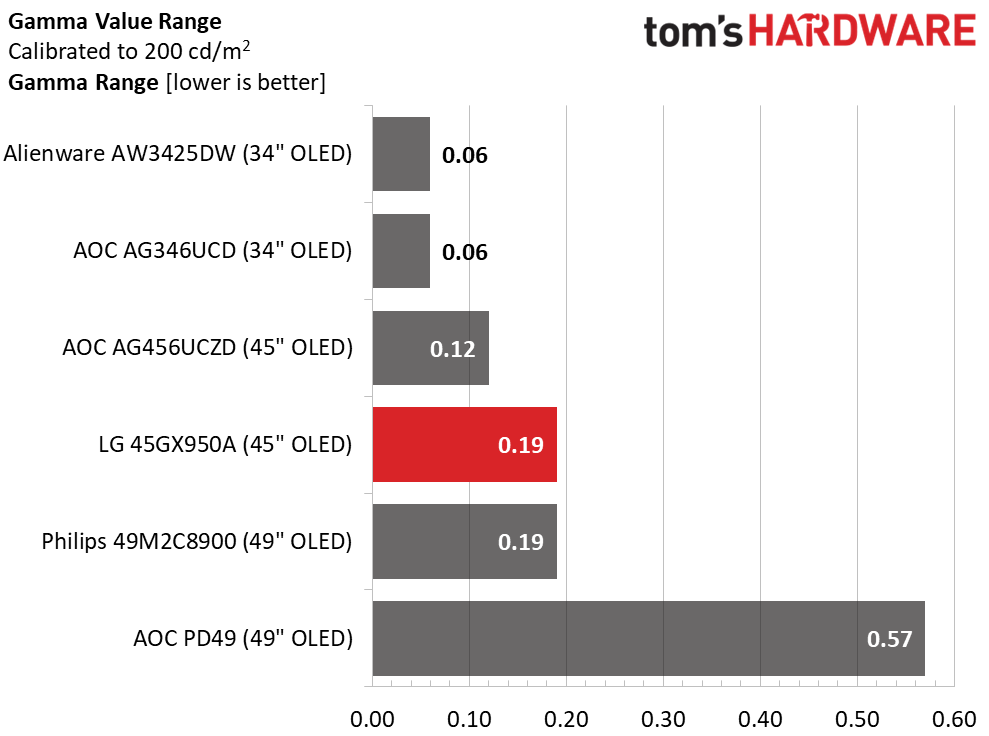
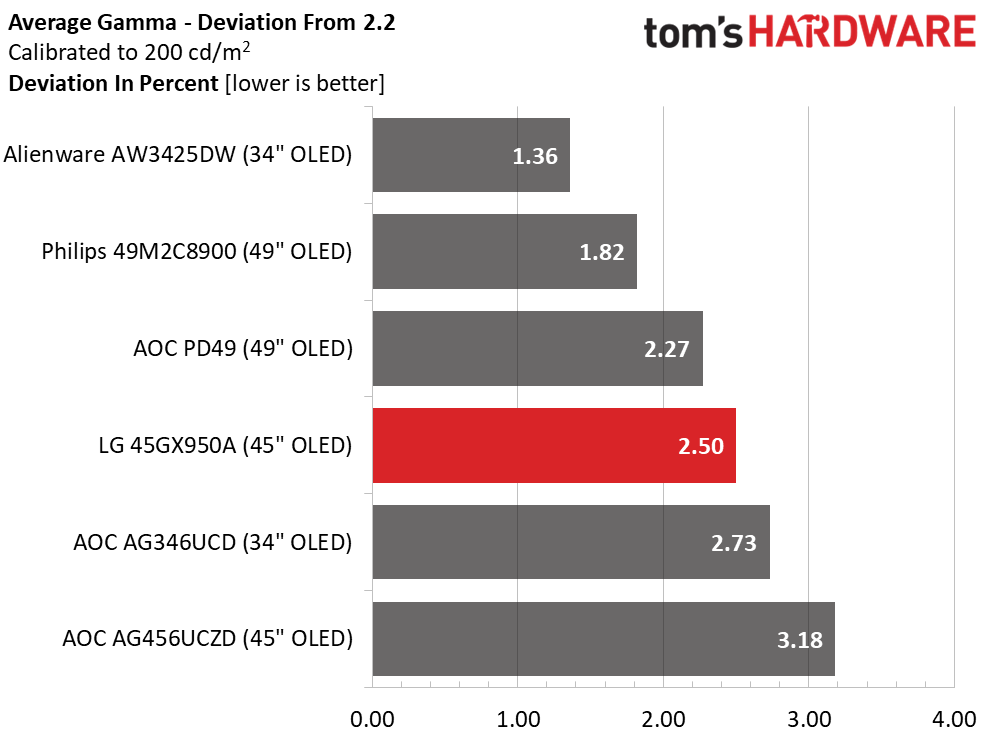
The 45GX950A fares well against its competitors with a respectable 2.63dE out-of-box grayscale score. It can be enjoyed without calibration. Since I could not improve this value, it falls to last place after the other screens are adjusted. It still has almost no visible errors, so I have no complaint.
In the gamma test, I measured the 45GX950A against BT.1886 as LG intended. The range of values is fairly tight at 0.19, and the deviation from 2.4 is 2.5% with an actual value of 2.34. This is very good performance. However, it would be nice to have a 2.2 option.
Color Gamut Accuracy
Our color gamut and volume testing use Portrait Displays’ Calman software. For details on our color gamut testing and volume calculations, click here.
Get Tom's Hardware's best news and in-depth reviews, straight to your inbox.
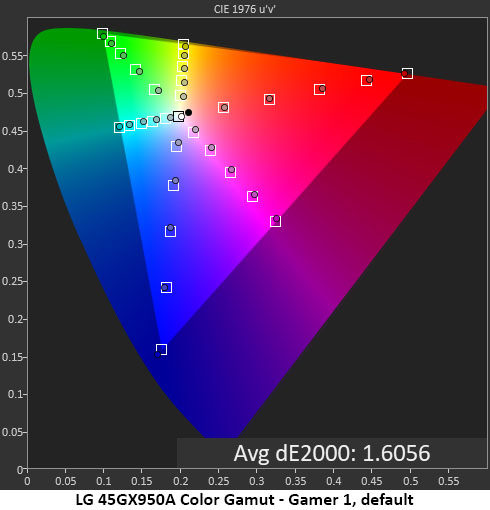

In the default color test, the 45GX950A shows no visible errors and a very low average of 1.61dE. Few monitors are this good out of the box. Again, this is to a BT.1886 gamma reference. The sRGB mode is slightly oversaturated in red, magenta and blue, while cyan, green and yellow are on target. This is mainly due to the skewed gamma, which throws off color balance. This can’t be corrected in the OSD, but it is possible to create custom calibrations with a meter and LG’s Calibration Studio app.
Comparisons
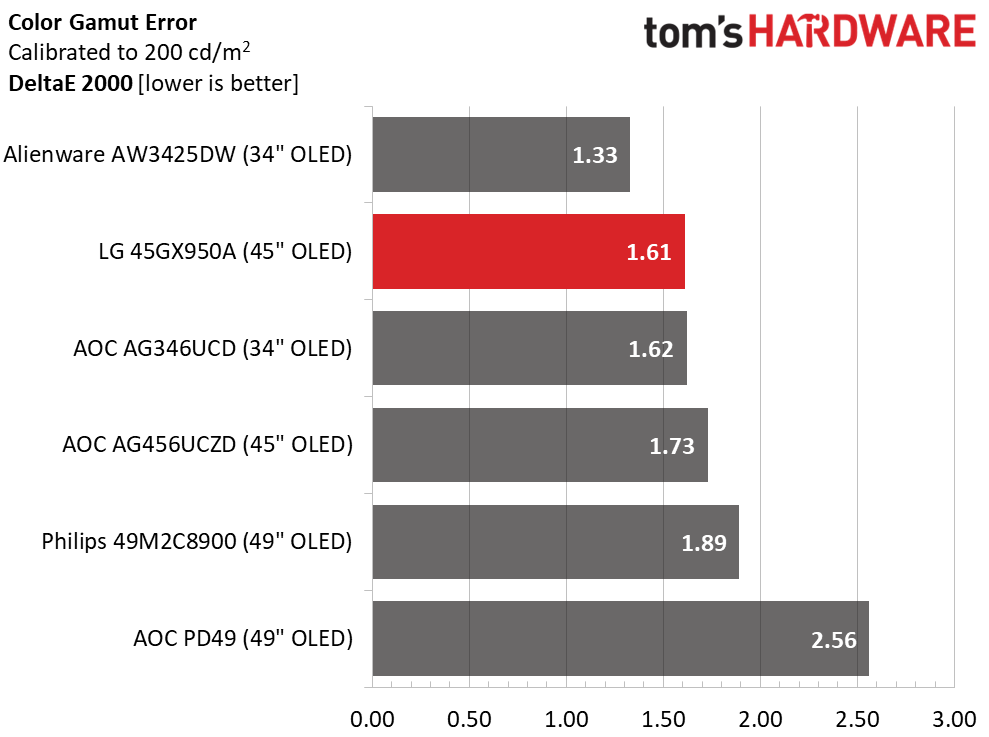

The 45GX950A takes second place in the color comparison despite running at its default settings. The other screens have all been calibrated, which means LG has done a good job with its factory setup. This is excellent performance.
In the volume test, you can see that the 45GX950A doesn’t have a Quantum Dot layer, which puts it on par with the AG456UCZD and behind the top four screens, which are more saturated. 97.43% of DCI-P3 is still very colorful, though. I noted some oversaturation in the sRGB mode, but that final volume calculation is an ideal 98.34%.
Test Takeaway: The 45GX950A has superb out-of-the-box accuracy with no need for calibration. Adjustments to the RGB sliders caused some gamma issues, which should be addressed in a future firmware update. The gamma reference here is BT.1886, which is fine, but a 2.2 choice would be welcome. Color volume is very good at nearly 100%, but not quite as high as the Quantum Dot screens I’ve tested.
MORE: Best Gaming Monitors
MORE: How We Test PC Monitors
MORE: How to Buy a PC Monitor
Current page: Grayscale, Gamma and Color
Prev Page Brightness and Contrast Next Page HDR Performance
Christian Eberle is a Contributing Editor for Tom's Hardware US. He's a veteran reviewer of A/V equipment, specializing in monitors. Christian began his obsession with tech when he built his first PC in 1991, a 286 running DOS 3.0 at a blazing 12MHz. In 2006, he undertook training from the Imaging Science Foundation in video calibration and testing and thus started a passion for precise imaging that persists to this day. He is also a professional musician with a degree from the New England Conservatory as a classical bassoonist which he used to good effect as a performer with the West Point Army Band from 1987 to 2013. He enjoys watching movies and listening to high-end audio in his custom-built home theater and can be seen riding trails near his home on a race-ready ICE VTX recumbent trike. Christian enjoys the endless summer in Florida where he lives with his wife and Chihuahua and plays with orchestras around the state.
